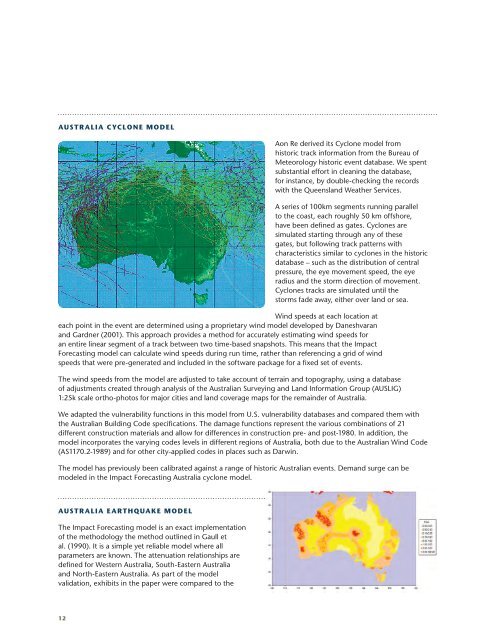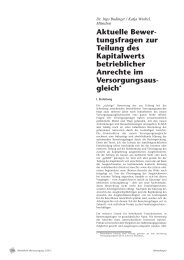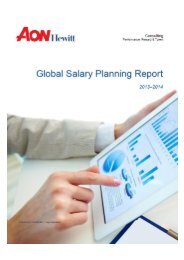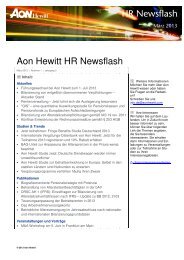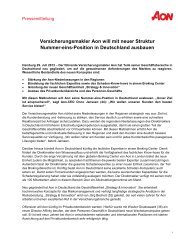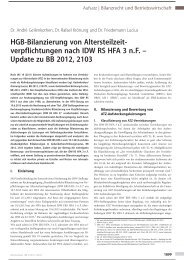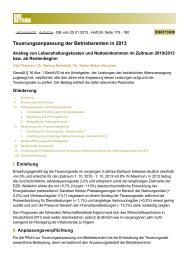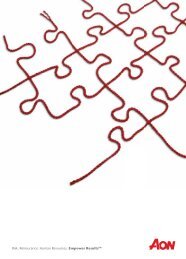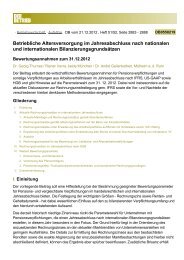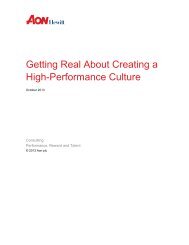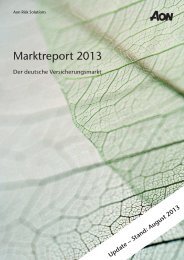IMPACT FORECASTING - Aon
IMPACT FORECASTING - Aon
IMPACT FORECASTING - Aon
You also want an ePaper? Increase the reach of your titles
YUMPU automatically turns print PDFs into web optimized ePapers that Google loves.
AUSTRALIA CyCLONE MOdEL<br />
12<br />
<strong>Aon</strong> Re derived its Cyclone model from<br />
historic track information from the Bureau of<br />
Meteorology historic event database. We spent<br />
substantial effort in cleaning the database,<br />
for instance, by double-checking the records<br />
with the Queensland Weather Services.<br />
A series of 100km segments running parallel<br />
to the coast, each roughly 50 km offshore,<br />
have been defined as gates. Cyclones are<br />
simulated starting through any of these<br />
gates, but following track patterns with<br />
characteristics similar to cyclones in the historic<br />
database – such as the distribution of central<br />
pressure, the eye movement speed, the eye<br />
radius and the storm direction of movement.<br />
Cyclones tracks are simulated until the<br />
storms fade away, either over land or sea.<br />
Wind speeds at each location at<br />
each point in the event are determined using a proprietary wind model developed by Daneshvaran<br />
and Gardner (2001). This approach provides a method for accurately estimating wind speeds for<br />
an entire linear segment of a track between two time-based snapshots. This means that the Impact<br />
Forecasting model can calculate wind speeds during run time, rather than referencing a grid of wind<br />
speeds that were pre-generated and included in the software package for a fixed set of events.<br />
The wind speeds from the model are adjusted to take account of terrain and topography, using a database<br />
of adjustments created through analysis of the Australian Surveying and Land Information Group (AUSLIG)<br />
1:25k scale ortho-photos for major cities and land coverage maps for the remainder of Australia.<br />
We adapted the vulnerability functions in this model from U.S. vulnerability databases and compared them with<br />
the Australian Building Code specifications. The damage functions represent the various combinations of 21<br />
different construction materials and allow for differences in construction pre- and post-1980. In addition, the<br />
model incorporates the varying codes levels in different regions of Australia, both due to the Australian Wind Code<br />
(AS1170.2-1989) and for other city-applied codes in places such as Darwin.<br />
The model has previously been calibrated against a range of historic Australian events. Demand surge can be<br />
modeled in the Impact Forecasting Australia cyclone model.<br />
AUSTRALIA EARThqUAkE MOdEL<br />
The Impact Forecasting model is an exact implementation<br />
of the methodology the method outlined in Gaull et<br />
al. (1990). It is a simple yet reliable model where all<br />
parameters are known. The attenuation relationships are<br />
defined for Western Australia, South-Eastern Australia<br />
and North-Eastern Australia. As part of the model<br />
validation, exhibits in the paper were compared to the


